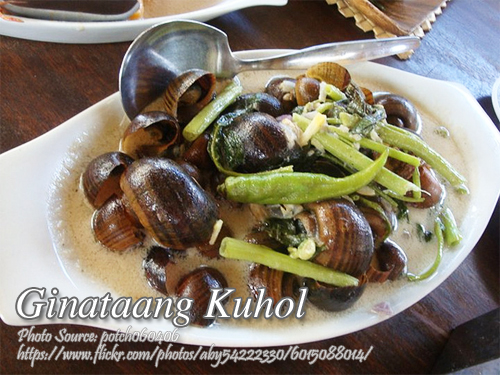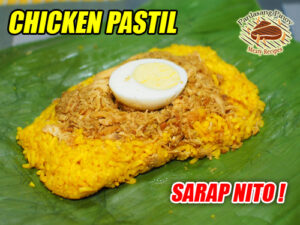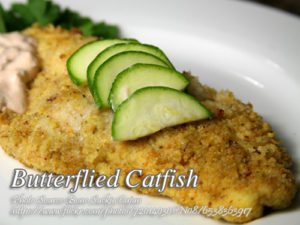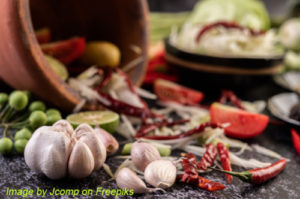Ginataaang kuhol or golden apple snails in coconut milk is a Filipino freshwater mollusk delicacy. These river snails are cooked in coconut milk with spices like garlic, ginger, turmeric, bagoong alamang and red chili pepper.Cooking the snails in coconut milk is one of the traditional way of cooking it and I think this is the only way these snails are cooked. If you will ask me, this is one of my favorite Filipino dish but the only hindrance of cooking this is the availability and if the source where it is caught is clean.
I have an experience where I bought more than 2 kilos of kuhol but I never thought the vendor is sneaky enough to lie to us where he got the snails. When we place it in a basin full of water to let snails vomit the stuffs inside, the stench is unbearable. I think they caught it in a septic tank (poso negro). So before buying the snails, smell it first.
A Taste of Home and Childhood Memories
Filipino food represents something more than the staple adobo or sinigang. It is about how, growing up in this small rural town of Batangas, I got surrounded by dishes exotic to many but comforting in every family gathering. Among those dishes is Ginataang Kuhol, which I would refer to as a real blast of nostalgia in the creaminess of coconut goodness with spice.
My Lolo Miguel would wake up before dawn to catch all of these freshwater snails from the river just nearby. He would stroll patiently along the shallow water, feeling for these slimy delicacies with his bare hands. I still hear his voice saying that the best kuhol should be collected after a rainy day as they are fat and flavorful. It was quite scrupulous, yet he said a dish such as this deserved only the freshest catch. He said that the way Lolo would pick his ingredients was the benchmark for what made the dish so special.
The Beauty of Cooking with Coconut Milk
There is something beautiful about cooking with coconut milk which brings out the true essence of Filipino cuisine. It’s a traditional method, and we use it not only because it is rich and creamy but also because it brings out the flavours of whatever you combine it with. My Tita Cely insisted on freshly squeezing the coconut milk. She would always say, “The gata you get from the market doesn’t even compare to the creamy, thick consistency of the freshly pressed coconut meat!
” When I was young, I would sit in front of the kitchen counter and watch her grate the coconuts herself and squeeze out the milk by hand. It looked like a chore, but worth every precious drop. Simmered kuhol snails in coconut milk results in a luscious sauce infused with the spices and herbs that flavor the dish. Garlic, ginger, and turmeric mingle with the earthy notes of the kuhol.
According to Tita Cely, the secret is in using the first press of coconut milk or kakang gata, giving the sauce a thicker and richer taste that would perfect the kuhol’s absorption of all that creamy good stuff.
A Few Tips Before Cooking This Delicacy
Cooking these river snails takes some preparation, and where most rookie cooks err. My cousin, Junjun, had once encountered a bad meeting with the kuhol, which tasted bitter and gritty. Turns out he had omitted the crucial purging. The best results would require soaking the snails in clean water for a few hours or even overnight. Thus, those impurities will be expelled, and the dish would not have an unpleasant taste or odor. I learned it from our neighbor, Manang Lucy, that putting the snails in a basin and sprinkling a little salt on top will do the trick.
That will hasten the release of the remaining dirt from the snails. Well, it is very useful to know if they sourced it from its real origin. Not all kuhol are the same, and I had my share of the experience when I regretted not being so cautious. One time, the snails I bought smelled a bit weird, and after cooking them, the taste was weird. My brother joked it seemed like we were eating straight out of a sewer. Since then, I always check and sniff the snails before buying them.
Believe me, it is better to be safe than sorry, about this dish.
Snails from Rivers to Dinner Plates
Best paired over freshly steamed rice, it’s a must-try for the great satisfying chew and explosion of flavors with each bite of that snail, battered thick by the coconut sauce. For an added twist, serve with patis and calamansi on the side. This slight drizzle of salty-sour dip raises the creamy flavor of the coconut sauce and balances the richness of the dish.
More than its taste, though, this dish fills me with a great sense of nostalgia. This reminds me about the simple life in the province like plying away long afternoons sitting by our nipa hut, cousins competing as we laugh over who could pick out more meat from snail shells, and the proud eyes of Lolo Miguel as he looks at us enjoy what we had for lunch, cooked from his morning’s catch.
A Hugely Traditional Dish
And that particular recipe is not just about the snails or the coconut milk; it’s about the history and tales behind it. In other parts of the Philippines, cooking river snails is considered a special treat in those places where they cannot readily find them. Sometimes, this is served in family gatherings and celebrations, but in rainy days, a warm, creamy bowl of this delicacy chases away the cold.
A Flavorful History
The dish goes way, way back. During the Spanish colonial period, snails were but poor folks’ food. Yet our ancestors took what little they had and made it extraordinary by cooking the snails in gata or coconut milk, turning something simple into something that would stand proudly on any dinner table.
Today, this dish serves as a testament to the ingenuity and resourcefulness of the Filipino people in making good out of the bounty provided by Mother Nature. Whether one’s child, just beginning to cook, or looking to relive childhood tastes again, the process of creating this dish is always gratifying. And, when again you find a bunch of river snails at your marketplace, try them. You might just discover that a simple recipe can tie you to the past and with the people dear to you.
Ginataang Kuhol (Snails in Coconut Milk)
Ingredients
- 3 kilos kuhol golden apple snails
- 1 thumb-size fresh ginger chopped
- 5 cups coconut milk
- 1 cup onions chopped
- 2 cups coconut cream
- 2 pcs finger pepper siling haba
- 1/2 cup bagoong alamang
- 1 thumb-size fresh turmeric luyang dilaw, chopped
- 2 cloves garlic cnopped
- 3 pcs hot chilis for spicy hot ginataang kuhol
Instructions
How to cook Ginataang Kuhol
- Wash and scrub river snails thoroughly.
- Saute garlic until golden brown then add ginger, turmeric, onions and cook until mushy.
- Add in bagoong and cook. Wait until all are well-blended.
- Add kuhol and coconut milk. Cover pan tightly and cook over low heat.
- When kuhol is tender, pour coconut cream and continue cooking.
- Drop in finger pepper. If you prefer hot, add in chilis.
- Wait for the sauce to thicken and oil comes to the surface.
- Add water in case the mixture dries out.
- Continue cooking until kuhol is tender. Serve hot.
Notes
Cooking Tips:
Give the Snails Proper Purging
Place it in clean water for at least four hours before cooking or overnight if possible. This process allows you to remove all the dirt particles and other impurities from the snails so that when the dish is cooked, the texture would not have any gritty feeling to it. Adding a pinch of salt or vinegar in the water accelerates the process and makes the snails cleaner.Use Freshly Squeezed Coconut Milk
Freshly squeezed coconut milk is way more dense and rich compared to the ready-to-use ones sold in stores. That true flavor and high consistency are something great to pair with earthy-tasting snails. If you use canned coconut milk, you may add a wee bit of cornstarch to thicken it or let the sauce simmer a bit longer.Snails Must be Fresh and Odor-Free
One should select snails that don't have a bad smell since this could be an indicator they're not fresh or came from dirty regions. The snail should have intact shells and those that are moving or active, which will ensure the dish has a clean flavor without any different tastes.





